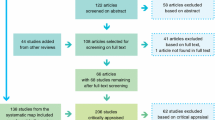Abstract
Despite of being structurally simpler and species-impoverished than natural forests, agroforestry plantations can act as a secondary habitat for native species and sustain some biodiversity. In particular, insectivores can provide important ecosystem services such as insectivory, indirectly benefiting plants through the reduction of herbivory and increasing productivity, by diminishing herbivores abundance. The lending of these services could occur in agroforestry systems, and in the same magnitude that in natural environments, however it has not yet been assessed whether the direct effect of insectivores over insects and indirect effect on plants differ between natural and agroforestry environments depending on possible modulating factors such as climatic region, type of insectivore, trophic group of the preyed arthropod and length of insectivores experimental exclusion. In this study, through a meta-analysis, it was assessed the provision of ecosystem services by insectivores in agroforestry systems compared to natural systems, contrasting it with the modulating factors mentioned. In general, insectivorous species reduced arthropod abundance and plant herbivory, and increased plant productivity. The magnitude and direction of these effects did not differ between natural and agroforestry systems, and neither did between different climatic regions, type of insectivore, preyed arthropod trophic groups nor experiment length. The effect of insectivores on productivity can vary based on the variable used to measure productivity. Our results evidence the provision of services by the insectivores present in plantations, independently of factors that could modulate its magnitude and direction. In this way, enhancing the existence of these important interactions within plantations could represent a win–win scenario.



Similar content being viewed by others

References
Allen R, Platt K, Wiser S (1995) Biodiversity in New Zealand plantations. N Z For 39(4):26–29
Bridgeland WT, Beier P, Kolb T, Whitham TG (2010) A conditional trophic cascade: birds benefit faster growing trees with strong links between predators and plants. Ecology 91:73–84
Costanza R, d’Arge R, de Groot R, Farberk S, Grasso M, Hannon B, Limburg K, Naeem S, O’Neill RV, Paruelo J, Raskin RG, Sutton P, van den Belt M (1997) The value of the world’s ecosystem services and natural capital. Nature 387:253–260
de Groot RS, Alkemade R, Braat L, Hein L, Willemen L (2010) Challenges in integrating the concept of ecosystem services and values in landscape planning, management and decision making. Ecol Complex 7:260–272
Garibaldi LA, Kitzberger T, Mazía N, Chaneton EJ (2010) Nutrient supply and bird predation additively control insect herbivory and tree growth in two contrasting forest habitats. Oikos 119:337–349
Hartley M (2002) Rationale and methods for conserving biodiversity in plantation forests. For Ecol Manag 155:81–95
Kottek M, Grieser J, Beck C, Rudolf B, Rubel F (2006) World map of Köppen-Geigen climate classification. Meteorol Z 15:259–263
Lawton JH (1989) Food webs. In: Cherrett JM (ed) Ecological concepts. Blackwell, Oxford, pp 48–78
Lichtenberg JS, Lichtenberg DA (2002) Weak trophic interactions among birds, insects and white oak saplings (Quercus alba). Am Midl Nat 148:338–349
Lindenmayer DB, Hobbs RJ (2004) Fauna conservation in Australian plantation forests—a review. Biol Conserv 119:151–168
Losey JE, Vaughan M (2006) The economic value of ecological services provided by insects. Bioscience 56:311–323
Mäntylä E, Klemola T, Laaksonen T (2011) Birds help plants: a meta-analysis of top-down trophic cascades caused by avian predators. Oecologia 165:143–151
Matsumoto T, Itioka T, Nishida T (2003) Cascading effects of a specialist parasitoid on plant biomass in a citrus agroecosystem. Ecol Res 18:651–659
Mooney KA, Linhart YB (2006) Contrasting cascades: increase pine but not parasitic mistletoe growth. J Anim Ecol 75:350–357
Mooney KA, Gruner DS, Barber NA, Van Bael SA, Philpott SM, Greenberg R (2010) Interactions among predators and the cascading effects of vertebrate insectivores on arthropod communities and plants. Proc Natl Acad Sci USA 107:7335–7340
Nájera A, Simonetti JA (2010) Enhancing avifauna in commercial plantations. Conserv Biol 24:319–324
Perfecto I, Vandermeer JH, Bautista GL, Ibarra-Nuñez G, Greenberg R, Bichier P, Langridge S (2004) Greater predation in shaded coffee farms: the role of resident neotropical birds. Ecology 85:2677–2681
Polis GA, Holt RD (1992) Intraguild predation: the dynamics of complex trophic interactions. Trends Ecol Evol 7:151–154
Polis GA, Strong DR (1996) Food web complexity and community dynamics. Am Nat 147:813–846
Ramírez PA, Simonetti JA (2011) Conservation opportunities in commercial plantations: the case of mammals. J Nat Conserv 19:351–355
Rosenberg SM, Adams D, Gurevitch J (2000) MetaWin: statistical software for meta-analysis version 2. Sinauer Associates, Inc., Sunderland
Schmitz OJ, Hambäck PA, Beckerman AP (2000) Trophic cascades in terrestrial systems: a review of the effects of carnivore removals on plants. Am Nat 155:141–153
Schwenk WS, Strong AM, Sillett TS (2010) Effects of bird predation on arthropod abundance and tree growth across an elevational gradient. J Avian Biol 41:367–377
Simonetti JA, Grez AA, Bustamante RO (2006) Interacciones y procesos en el bosque maulino fragmentado. In: Grez AA, Simonetti JA, Bustamante RO (eds) Biodiversidad en ambientes fragmentados de Chile: patrones y procesos a diferentes escalas. Editorial Universitaria, Santiago, pp 99–114
Simonetti JA, Grez AA, Estades CF (eds) (2012) Biodiversity conservation in agroforestry landscapes: challenges and opportunities. Editorial Universitaria, Santiago
Strong DR (1992) Are trophic cascades all wet? Differentation and donor-control in specious ecosystems. Ecology 73:747–754
Tremblay A, Mineau P, Stewart RK (2001) Effects of bird predation on some pest insect populations in corn. Agric Ecosyst Environ 83:143–152
Van Bael SA, Brawn JD (2005) The direct and indirect effects of insectivory by birds in two contrasting Neotropical forests. Oecologia 143:106–116
Van Bael SA, Philpott SM, Greenberg R, Bichier P, Barber NA, Mooney KA, Gruner DS (2008) Birds as predators in tropical agroforestry systems. Ecology 89:928–934
Acknowledgments
This research has been supported by Fondecyt 1095046; partial support was also provided by Programa Domeyko-Biodiversidad (IT3), Universidad de Chile.
Author information
Authors and Affiliations
Corresponding author
Appendix 1
Rights and permissions
About this article
Cite this article
Poch, T.J., Simonetti, J.A. Ecosystem services in human-dominated landscapes: insectivory in agroforestry systems. Agroforest Syst 87, 871–879 (2013). https://doi.org/10.1007/s10457-013-9603-3
Received:
Accepted:
Published:
Issue Date:
DOI: https://doi.org/10.1007/s10457-013-9603-3



